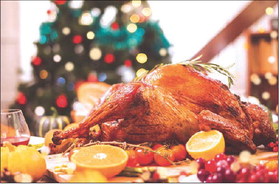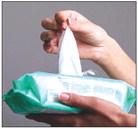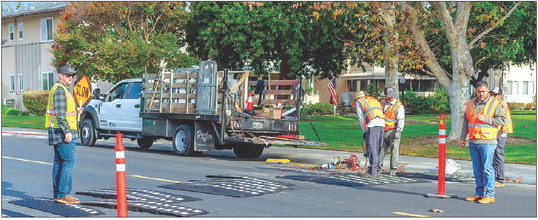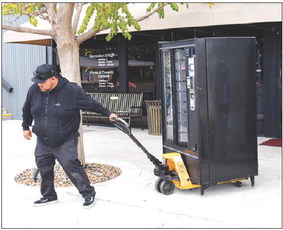Gather safely to reduce the risk of spreading COVID-19


GETTING READY FOR THE HOLIDAYS
The COVID-19 pandemic has been stressful and isolating for many people, according to the Centers for Disease Control. Gatherings during the upcoming holidays can be an opportunity to reconnect with family and friends. This holiday season, consider how your holiday plans can be modified to reduce the spread of COVID-19 to keep your friends, families and communities healthy and safe.
Unfortunately, the COVID-19 epidemic is worsening, and small household gatherings are an important contributor to the rise in COVID-19 cases. The CDC offers the following considerations to slow the spread of COVID-19 during small gatherings. These considerations are meant to supplement—not replace—any state, local, territorial or tribal health and safety laws, rules and regulations with which all gatherings must comply. Considerations for Small Gatherings of Family and Friends
Celebrating virtually or with members of your own household (who are consistently taking measures to reduce the spread of COVID-19) poses the lowest risk for spread. Your household
Orange County has moved back to the most restrictive purple tier, Gov. Gavin Newsom announced Nov. 16. Newsom said the state is hitting an “emergency brake” on economic activity in light of what he calls an unprecedented spike in COVID-19 cases statewide. (See page 4 for more information.) is anyone who currently lives and shares common spaces in your housing unit. This can include family members, as well as people who are unrelated to you. People who do not currently live in your housing unit, such as grandchildren visiting for holidays, should be considered part of different households. In-person gatherings that bring together family members or friends from different households pose varying levels of risk.
Factors that contribute to the risk of getting and spreading COVID-19 at small in-person gatherings. In combination, these factors will create various amounts of risk: Community Levels of COVID-19 —High or increasing levels of COVID-19 cases in the gathering location, as well as in the areas where attendees are coming from, increase the risk of infection and spread among attendees.
Family and friends should consider the number of COVID-19 cases in their community and in the community where they plan to celebrate when deciding whether to host or attend a gathering. Information on the number of cases in an area can often be found on the local health department website. Cases in Orange County and surrounding areas are on the rise. The information changes daily. To check local numbers, check the Orange County Health Care Agency website at https://occovid19.ochealthinfo.com.
Exposure During Travel— Airports, bus stations, train stations, public transport, gas stations and rest stops are places travelers can be exposed to the virus in the air and on surfaces.
Location of the Gathering— Indoor gatherings, especially those with poor ventilation (for example, small enclosed spaces with no outside air), pose more risk than outdoor gatherings.
Duration of the Gathering— Gatherings that last longer pose more risk than shorter gatherings. Being within 6 feet of someone who has COVID-19 for a cumulative total of 15 minutes or more greatly increases the risk of becoming sick and requires a 14-day quarantine.
Number and Crowding of People at the Gathering— Gatherings with more people pose more risk than gatherings with fewer people. The CDC does not have a limit or recommend a specific number of people for gatherings. The size of a holiday gathering should be determined based on the ability of people from different households to stay 6 feet (2 arm lengths) apart, wear masks, wash hands, and follow state, local, territorial or tribal health and safety laws, rules and regulations.
Behaviors of People Prior to the Gathering— Individuals who did not consistently adhere to social distancing (staying at least 6 feet apart), mask wearing, hand washing and other prevention behaviors pose more risk than those who consistently practiced these safety measures.
Behaviors of People During the Gathering— Gatherings with more safety measures in place, such as mask wearing, social distancing and hand washing, pose less risk than gatherings where fewer or no preventive measures are being implemented. Use of alcohol or drugs may alter judgment and make it more difficult to practice COVID-19 safety measures.
Do not host or participate in any in-person gatherings if you or anyone in your household:
•Has been diagnosed with COVID-19 and has not met the criteria for when it is safe to be around others
• Has symptoms of COVID-19
• Is waiting for COVID-19 viral test results
• May have been exposed to someone with COVID-19 in the last 14 days
• Is at increased risk of severe illness from COVID-19 People at Increased Risk for Severe Illness
If you are an older adult or person with certain medical conditions who is at increased risk of severe illness from COVID-19, or live or work with someone at increased risk of severe illness, you should avoid in-person gatherings with people who do not live in your household.
If you are hosting a holiday dinner:
• Limit the number of attendees as much as possible to allow people from different households to remain at least 6 feet apart at all times. Guests should avoid direct contact, including handshakes and hugs, with others not from their household.
• Host outdoor rather than indoor gatherings as much as possible. Even outdoors, require guests to wear masks when not eating or drinking. Make sure masks cover both the mouth and nose. It is also important to stay at least 6 feet away from people who are not in your household at all times.
• Increase ventilation by opening windows and doors to the extent that is safe and feasible based on the weather, or by placing central air and heating on continuous circulation.
• Encourage guests to avoid singing or shouting, especially indoors.
• Encourage people to wash their hands often with soap and water for at least 20 seconds. If soap and water are not readily available, use hand sanitizer that contains at least 60-percent alcohol.
• Provide guests information about any COVID-19 safety guidelines and steps that will be in place at the gathering.
• Provide and/or encourage people to bring supplies to help everyone to stay healthy. These include extra masks (do not share or swap with others), hand sanitizer and tissues. Stock bathrooms with enough hand soap and single-use towels.
• Limit contact with commonly touched surfaces or shared items such as serving utensils.
• Clean and disinfect commonly touched surfaces and any shared items between uses when feasible. Use EPA-approved disinfectant.
The more of these prevention measures that you put in place, the safer your gathering will be.




